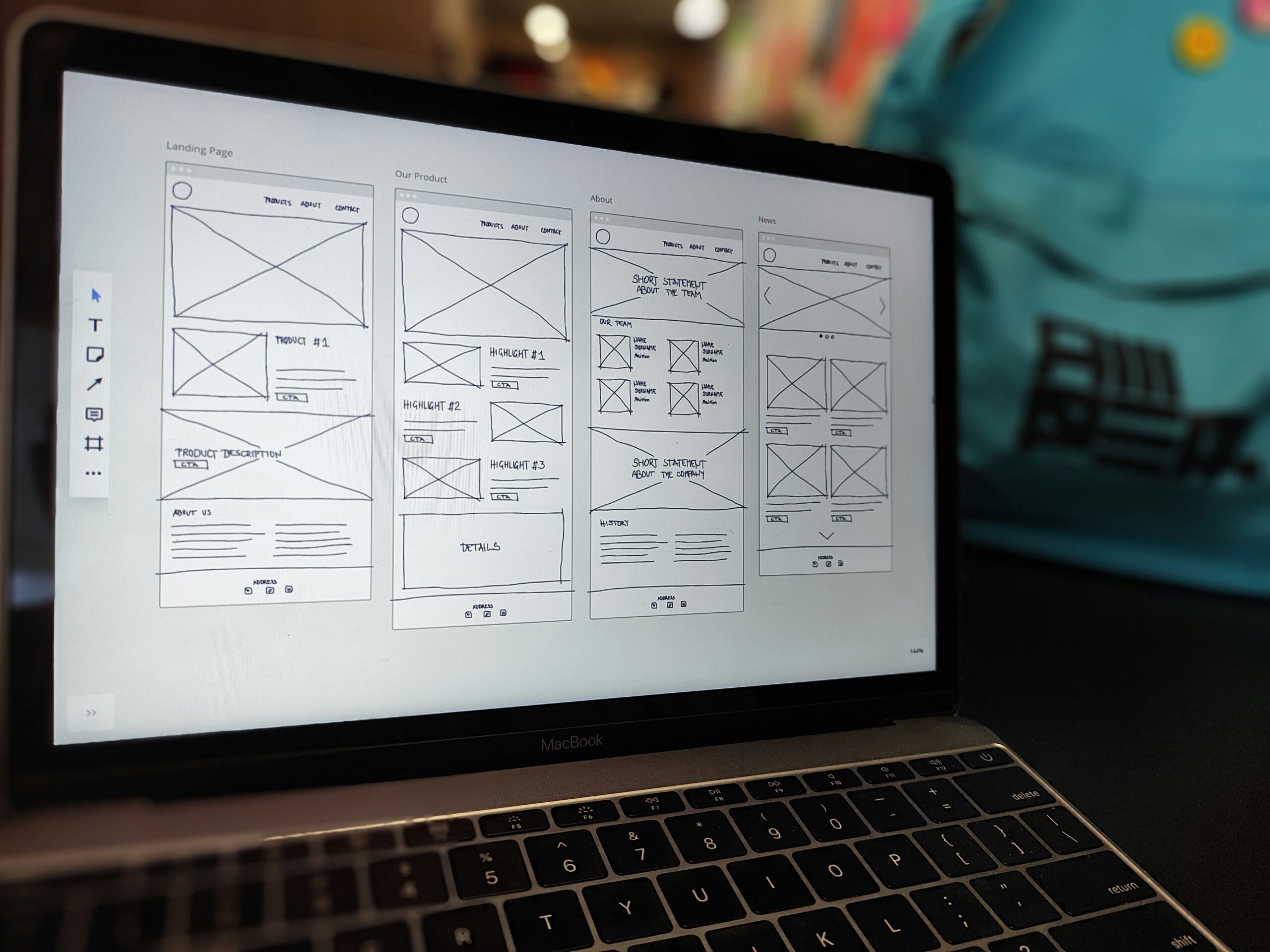Many websites overlook accessibility, thinking it only benefits a few users. In reality, accessibility is vital for exceptional user experience for everyone. This article will discuss the role of accessibility in enhancing interaction design, outline key standards, and share practical tips to improve customer engagement. By addressing accessibility concerns, businesses can also boost their website’s effectiveness and reach. Readers will learn how to create a more inclusive online presence that connects with all users, ensuring that hyperlinks, graphics, and contact options, like email addresses, are user-friendly for everyone.
Key Takeaways
- Accessibility improves user engagement and promotes customer loyalty for all businesses
- Understanding and applying WCAG guidelines enhances website usability for diverse users
- Implementing assistive technologies creates an inclusive online environment for all visitors
- Gathering user feedback is vital for continuous improvement in website accessibility
- Expanding audience reach supports business growth and enhances brand trust through inclusivity
Understanding the Role of Accessibility in User Experience

Defining accessibility within digital environments is essential for creating a positive user experience. Accessibility influences user engagement by ensuring that all visitors can navigate a web page with ease, from the home page to specific calls to action. Additionally, an accessible interface fosters customer loyalty, as users feel valued when their needs are met, regardless of their abilities.
Defining Accessibility Within Digital Environments
Accessibility in digital environments means making sure that every user can interact with a website easily, regardless of their abilities. This includes features like screen readers that help visually impaired customers understand the content on landing pages, enhancing their overall experience. By focusing on user interface design that accommodates everyone, brands can create loyal customers who feel respected and included.
The Impact of Accessibility on User Engagement
Accessibility directly affects user engagement on the World Wide Web. When websites and mobile apps are designed with accessible features, they encourage more visitors to interact with the content, which can be supported by statistics showing higher retention rates. For instance, when photography and other multimedia elements are made accessible, users with disabilities can enjoy the same experiences, leading to increased satisfaction and loyalty to the brand.
Accessibility as a Contributor to Customer Loyalty
Accessibility significantly builds customer loyalty by enhancing user experience through thoughtful user interface design and page layout. When users find it easy to navigate a website’s navigation bar or subscribe to a newsletter, they are more likely to return. By ensuring that all users can find information and engage with content regardless of their abilities, businesses demonstrate a commitment to inclusivity, fostering trust and long-lasting relationships with their audience.
Key Accessibility Standards and Guidelines

Understanding key accessibility standards and guidelines is vital for enhancing user experience. The Web Content Accessibility Guidelines (WCAG) outline principles that set a foundation for inclusivity. Additionally, ARIA roles play a crucial role in improving usability. Evaluating compliance through accessibility audits ensures that websites meet these standards, boosting credibility and supporting effective user research and usability testing.
Overview of WCAG Principles
The Web Content Accessibility Guidelines (WCAG) outline essential principles that are pivotal for achieving good customer satisfaction in digital marketing. These principles focus on making web content more accessible to everyone, including those with disabilities. By understanding and applying these guidelines, businesses can create a clear hierarchy in their content, ensuring that important information is easily navigable and that all users receive a consistent experience.
- Understanding accessibility principles improves digital marketing strategies.
- Knowledge of WCAG promotes a better user experience for all customers.
- Creating a clear hierarchy in content enhances usability.
- Applying accessibility standards fosters trust and loyalty.
Importance of ARIA Roles in Enhancing Usability
Understanding the importance of ARIA roles is essential for enhancing web usability, particularly for users on mobile devices. ARIA roles add structure and meaning to web architecture, making it easier for assistive technologies to interpret content. For instance, effective use of ARIA can allow users to scroll through elements more intuitively, leading to a smoother experience and greater accessibility for everyone.
Evaluating Compliance Through Accessibility Audits
Evaluating compliance through accessibility audits is essential for understanding how real users perceive a website’s usability. By employing eye-tracking techniques, businesses can identify which buttons or elements attract attention and how effectively they direct users toward desired actions. This data guides improvements in responsive web design, ensuring that all visitors, regardless of their abilities, have a seamless experience navigating the site.
Practical Steps to Enhance Accessibility on Your Website

Implementing assistive technologies is essential for accommodating diverse end users. Effective design involves careful composition that prioritizes color contrast and readability. Additionally, creating keyboard navigation-friendly interfaces enhances a website’s overall usability. Each of these topics contributes to a strong information architecture, ensuring a positive evaluation of accessibility features.
Implementing Assistive Technologies for Diverse Users
Implementing assistive technologies is vital for achieving web accessibility in modern web design. Features like screen readers, voice recognition, and captioning tools support users with varying needs, allowing them to engage with content effectively. By incorporating these technologies, businesses can ensure their web presence is truly accessible, creating a more inclusive environment that meets the needs of all users.
Designing for Color Contrast and Readability
Designing for color contrast and readability is critical to user experience design. Proper CSS techniques can enhance navigation by ensuring that text stands out against its background, making it easier for consumers to read content. Utilizing algorithms to test color combinations can help identify accessible choices, allowing all users, including those with visual impairments, to engage fully with the website.
Creating Keyboard Navigation-Friendly Interfaces
Creating keyboard navigation-friendly interfaces is crucial for enhancing accessibility and overall usability. This approach considers user behavior, allowing individuals to navigate a website without relying on a mouse. For instance, websites that incorporate keyboard shortcuts for multimedia elements can significantly improve the user experience by accommodating various needs. This ensures that all users can explore content effortlessly while keeping accessibility heuristics in mind.
Accessibility Best Practices That Improve User Experience

Ensuring accessibility involves several best practices that enhance customer experience. Providing alt text for images and multimedia helps users understand content, especially when using stock photography. Structuring content with clear headings and labels improves visual hierarchy, guiding attention effectively. Additionally, integrating user feedback into accessibility strategies fosters continuous improvement, ensuring that websites effectively meet diverse needs.
Ensuring Alt Text for Images and Multimedia
Ensuring alt text for images and multimedia is a key practice for improving accessibility and enhancing user experience. Alt text improves readability by providing context to visuals, which benefits users who rely on screen readers or may have slow internet connections that cause image cache issues. By effectively implementing a clear alt text policy, websites can reduce bounce rates, as users can understand content better and stay engaged with the information presented.
- Importance of alt text for accessibility
- Enhances readability for all users
- Aids in understanding visuals
- Supports engagement, reducing bounce rate
Structuring Content With Clear Headings and Labels
Structuring content with clear headings and labels enhances website accessibility and user experience. This approach allows users to navigate through the information easily, leading them to relevant sections without confusion. For example, employing descriptive headings helps all visitors, particularly those using screen readers, understand the content’s organization, making their journey through the site more efficient:
- Utilizing clear headings aids in navigation.
- Descriptive labels enhance content understanding.
- The improved structure benefits all users, including those with disabilities.
- A better organization fosters a positive user experience.
Integrating User Feedback Into Accessibility Strategies
Integrating user feedback into accessibility strategies is vital for enhancing user experience. Businesses can collect insights through surveys and user testing to identify accessibility issues. This practical approach allows companies to address specific needs and improve the overall usability of their websites.
The Business Benefits of a Focus on Accessibility

Focusing on accessibility offers significant benefits for businesses. Expanding audience reach through inclusive design allows companies to serve a broader customer base. Reducing legal risks associated with accessibility non-compliance protects organizations from potential lawsuits. Furthermore, fostering a positive brand image through inclusive practices builds consumer trust and loyalty. These aspects highlight the value of integrating accessibility into web design.
Expanding Your Audience Reach Through Inclusive Design
Expanding audience reach through inclusive design is essential for businesses attracting diverse customers. When websites are accessible, they can effectively serve people with different abilities, ensuring that no potential customer is left behind. By prioritizing accessibility, companies comply with legal standards and open their doors to a larger audience, ultimately boosting engagement and fostering customer loyalty.
Reducing Legal Risks Associated With Accessibility Non-Compliance
Reducing legal risks associated with accessibility non-compliance is a vital concern for businesses. By prioritizing accessibility, companies not only adhere to legal requirements but also prevent potential lawsuits that could arise from neglecting these standards. Investing in accessible design creates a safer environment for all users, fostering a positive reputation and building trust with customers who value inclusivity.
Fostering a Positive Brand Image Through Inclusive Practices
Fostering a positive brand image through inclusive practices is essential for businesses today. By prioritizing accessibility, organizations comply with standards and show that they care about every customer. This commitment to inclusivity can lead to greater customer trust and loyalty, as consumers increasingly prefer brands that demonstrate social responsibility and consideration for all users, regardless of their abilities.
Measuring the Impact of Accessibility on User Experience

Understanding how accessibility impacts user experience is critical for businesses. This section will discuss utilizing analytics to assess user interaction, gathering feedback from users with disabilities, and examining case studies of accessible websites and their performance. Each topic offers practical insights into improving accessibility and enhancing overall user satisfaction.
Utilizing Analytics to Assess User Interaction
Utilizing analytics plays a vital role in assessing user interaction on accessible websites. By tracking user behavior, businesses can identify areas where visitors may struggle or succeed, helping to refine and enhance the website’s design. For example, metrics such as page views, time spent on the site, and navigation paths reveal how effectively a site meets the needs of all users, highlighting opportunities for further improvement in accessibility.
Gathering Feedback From Users With Disabilities
Gathering feedback from users with disabilities is essential for enhancing accessibility and improving user experience. This can involve conducting surveys or usability testing specifically tailored to individuals with varying needs. By understanding their unique challenges and preferences, businesses can make informed adjustments that ensure their websites are both inclusive and user-friendly.
Conclusion
Accessibility is vital for creating an exceptional user experience. It ensures that all individuals can engage with online content easily and effectively regardless of their abilities. By prioritizing inclusive design, businesses meet legal standards and expand their audience, improve customer loyalty, and foster a positive brand image. Embracing accessibility leads to more satisfied users and ultimately drives engagement and growth.
